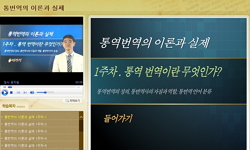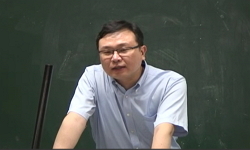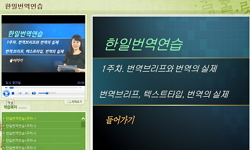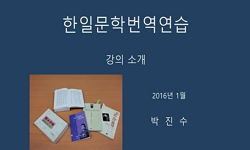번역은 제 2 의 창조라는 말이 있듯, 외국 문학 작품을 한국어로 번역하는 과정은 글자만 옮기는 것이 아니라, 독자가 이해할 수 있도록 새롭게 표현해내는 방법을 필요로 한다. 이 논문은 헝...
http://chineseinput.net/에서 pinyin(병음)방식으로 중국어를 변환할 수 있습니다.
변환된 중국어를 복사하여 사용하시면 됩니다.
- 中文 을 입력하시려면 zhongwen을 입력하시고 space를누르시면됩니다.
- 北京 을 입력하시려면 beijing을 입력하시고 space를 누르시면 됩니다.
https://www.riss.kr/link?id=A82382147
- 저자
- 발행기관
- 학술지명
- 권호사항
-
발행연도
2010
-
작성언어
-
- 주제어
-
KDC
349
-
등재정보
KCI등재
-
자료형태
학술저널
- 발행기관 URL
-
수록면
315-334(20쪽)
-
KCI 피인용횟수
0
- 제공처
-
0
상세조회 -
0
다운로드
부가정보
국문 초록 (Abstract)
번역은 제 2 의 창조라는 말이 있듯, 외국 문학 작품을 한국어로 번역하는 과정은 글자만 옮기는 것이 아니라, 독자가 이해할 수 있도록 새롭게 표현해내는 방법을 필요로 한다. 이 논문은 헝가리 작품을 한국어로 번역할 때 만나게 되는 문제점과 그 문제점을 해결하기 위한 방법을 찾기 위한 시도이다. 문제점의 기본은 헝가리어와 한국어의 차이에서 발생한다. 그래서 우선 두 언어의 공통점을 II 장에서, 차이점을 III 장에서 살펴보았다. 한국어에서는 주인공들의 나이, 성별, 상하관계를 정확히 파악해야 올바른 공대법과 높임말을 사용할 수 있다. 하지만 두 언어의 가장 큰 차이점은 어순에 있다. 헝가리어에서는 동사 앞에 높이는 문장성분이 가장 강조가 되지만, 한국어 번역에서는 이 강조점이 드러나지 않아, 단어를 반복하여 강조점을 유지하는 방법을 사용한다. 번역에서 가장 중요한 등가성은 내용적인 면과 형식적인 면을 함께 다루어야만 지켜진다. 헝가리 시에서는 음절 수, 운, 강세, 마디가시의 형식적인 미를 구성한다. 하지만 번역에서 이 세 기본요소를 충족시키려면 내용적으로 불명확한 번역이 될 수 있다. 그러므로 내용과 형식의 구성을 훼손하지 않고 등가성을 유지하기 위한 번역가의 독창적인 방법이 필요하다. 번역의 문제는 번역하려는 문학작품이 태어난 사회와 환경, 문화적인 분위기를 번역해 낸 언어가 가진 사회적, 문화적 특징과 접목시키려는 데에서 발생한다. 그러므로 번역은 단어와 단어, 문장과 문장을 그대로 옮기는 것이 아니라, 작품 전체를 구성하는 정신세계를 새로운 문화의 생산물로 구성해내는 새로운 시도이자 도전이라고 할 수 있다.
다국어 초록 (Multilingual Abstract)
This article aims to solve some of the difficulties in translation from Hungarian into Korean. Translation is defined in the first section, and the Hungarian language is compared with Korean in the second section. The comparison consists of similariti...
This article aims to solve some of the difficulties in translation from Hungarian into Korean. Translation is defined in the first section, and the Hungarian language is compared with Korean in the second section. The comparison consists of similarities and differences in two languages and cultures. In the last section, I focus on the problems of equivalence and the method to gain the equivalence in translation. I hope this article show the problems and one method for problem solving in Translation from Hungarian into Korean. Hungarian and Korean do not have a verb ‘have’, while ‘having’ is expressed using the verbs ‘van’ and ‘있다’. Two languages have no expletives. However, Korean verb stems are what cause the difficulties in translation from Hungarian. Korean honorifics and speech levels form 14 basic verb stems. Besides, Korean has many special honorific words, too. Translation must be done carefully with the expression of honorific and formality. The Hungarian language's word order is not fixed. the word order changes and the important words stay in front of the verb. The important words in the four Hungarian sentences are not expressed in Korean text. Translation is an interactive act and translators are mediators of meaning consequently they are responsible for transmitting cultural values. Therefore it is necessary for Hungarian and Korean translators to improve their language and culture knowledge. Translation connect not only one literal work with other, but also one culture with other.
목차 (Table of Contents)
- I. Introduction
- Ⅱ. Field of Translation
- III. Similarities between Hungarian and Korean
- IV. Differences between Hungarian and Korean
- V. Problems of Equivalence
- I. Introduction
- Ⅱ. Field of Translation
- III. Similarities between Hungarian and Korean
- IV. Differences between Hungarian and Korean
- V. Problems of Equivalence
- VI. Conclusion
참고문헌 (Reference)
1 Petőfi Sándor, "Összes muvei. I, II" Szépirodalmi kiadó 1986
2 Bassnett-Mcguire, Susan, "Translation Studies. Revised Edition" Routledge 1991
3 Snell-Hornby, Mary, "Translation Studies. An integrated approach" John Benjamins Publishing Company 1995
4 Nida, Eugene Albert, "Toward a Science of Translating" E.J. Brill 1964
5 Wilss, Wolfram, "The Science of Translation. in: Problems and Methods" Gunter Narr Verlag 1982
6 Jakobson, Roman, "On linguistic aspects of translation. in: On Translation" Harvard University Press 232-239, 1959
7 "Magyar népballadák" Europa Könyvkiadó 1994
8 Yeon, Jaehoon, "Korean Grammatical Constructions their form and meaning" Saffron 2003
9 Ihm, Ho Bin, "Korean Grammar for International Learners" Yonsei University Press 1988
10 Aczel, Richard, "Heidegger Thinking Translating. in: Transfer and Translation" BIP(Books In Prints) 2002
1 Petőfi Sándor, "Összes muvei. I, II" Szépirodalmi kiadó 1986
2 Bassnett-Mcguire, Susan, "Translation Studies. Revised Edition" Routledge 1991
3 Snell-Hornby, Mary, "Translation Studies. An integrated approach" John Benjamins Publishing Company 1995
4 Nida, Eugene Albert, "Toward a Science of Translating" E.J. Brill 1964
5 Wilss, Wolfram, "The Science of Translation. in: Problems and Methods" Gunter Narr Verlag 1982
6 Jakobson, Roman, "On linguistic aspects of translation. in: On Translation" Harvard University Press 232-239, 1959
7 "Magyar népballadák" Europa Könyvkiadó 1994
8 Yeon, Jaehoon, "Korean Grammatical Constructions their form and meaning" Saffron 2003
9 Ihm, Ho Bin, "Korean Grammar for International Learners" Yonsei University Press 1988
10 Aczel, Richard, "Heidegger Thinking Translating. in: Transfer and Translation" BIP(Books In Prints) 2002
11 Erdős József, "Halló, itt Magyarország" Akadémiai kiadó 1992
12 Reiss K., "Grundlegung einer allgemeinen Translationstheorie" Niemeyer 1984
13 Szegedy, Maszák Mihály, "Forditás és kánon. in: Irodalmi kánonok" Csokonai Kiadó 1998
14 Klaudy Kinga, "A nyelvészet és a Magyar felsőoktatás modernizációja" 4 : 449-457, 2005
15 Newmark, Peter, "A Textbook of Translation" Prentice Hall International 1988
동일학술지(권/호) 다른 논문
-
- 아시아·중동부유럽학회
- 안성호(Ahn SungHo)
- 2010
- KCI등재
-
- 아시아·중동부유럽학회
- 박미령(Mee Ryoung Park)
- 2010
- KCI등재
-
하벨의 최신작 「떠나가기」의 작품 분석과 프라하 극단과 아르하 극장 소고
- 아시아·중동부유럽학회
- 김규진(Kyuchin Kim)
- 2010
- KCI등재
-
폴란드 수용소 문학(Literatura Obozowa)에 나타난 역사적 현실의 미학적 구현방식에 관한 연구 (1)
- 한국동유럽발칸학회
- 최성은(Choi Sung Eun)
- 2010
- KCI등재
분석정보
인용정보 인용지수 설명보기
학술지 이력
| 연월일 | 이력구분 | 이력상세 | 등재구분 |
|---|---|---|---|
| 2016 | 평가예정 | 계속평가 신청대상(신규평가) | |
| 2013-01-24 | 학회명변경 | 한글명 : 한국동유럽발칸학회 -> 아시아중동부유럽학회</br> | |
| 2013-01-01 | 평가 | 학술지 통합(등재유지) | |
| 2010-01-01 | 평가 | 등재 1차 FAIL(등재유지) |  |
| 2008-06-23 | 학술지명변경 | 한글명 : 동유럽발칸학</br>외국어명 : Journal of Central, East European & Balkan Studies |  |
| 2008-01-01 | 평가 | 등재학술지 유지(등재유지) |  |
| 2006-01-16 | 학술지명변경 | 한글명 : 동유럽발칸학</br>외국어명 : Journal of Central, East European & Balkan Studies |  |
| 2006-01-02 | 학술지명변경 | 한글명 : 동유럽발칸학</br>외국어명 : Journal of Central & East European Studies |  |
| 2005-01-10 | 학술지명변경 | 한글명 : 동유럽발칸학</br>외국어명 : Journal of Central & East European Studies |  |
| 2005-01-01 | 평가 | 등재학술지 선정(등재후보2차) |  |
| 2004-01-01 | 평가 | 등재후보 1차 PASS(등재후보1차) |  |
| 2002-01-01 | 평가 | 등재후보학술지 선정(신규평가) |  |




 스콜라
스콜라






